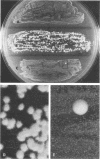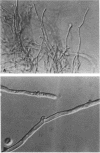Abstract
A complementation test was devised for the fungus Cryptococcus neoformans. Complementation was signalled by the growth of prototrophic heterokaryons generated in crosses of the type aB X Ab, where a and b represent any two of the genetic markers ilv1, cys1, cys2, and cys3. The cloned complementing heterokaryons formed characteristic hyphal colonies that contained both hyphae and yeast cells. The heterokaryon-derived yeasts were of three kinds: parental haploids, recombinant haploids, and diploids.
Full text
PDF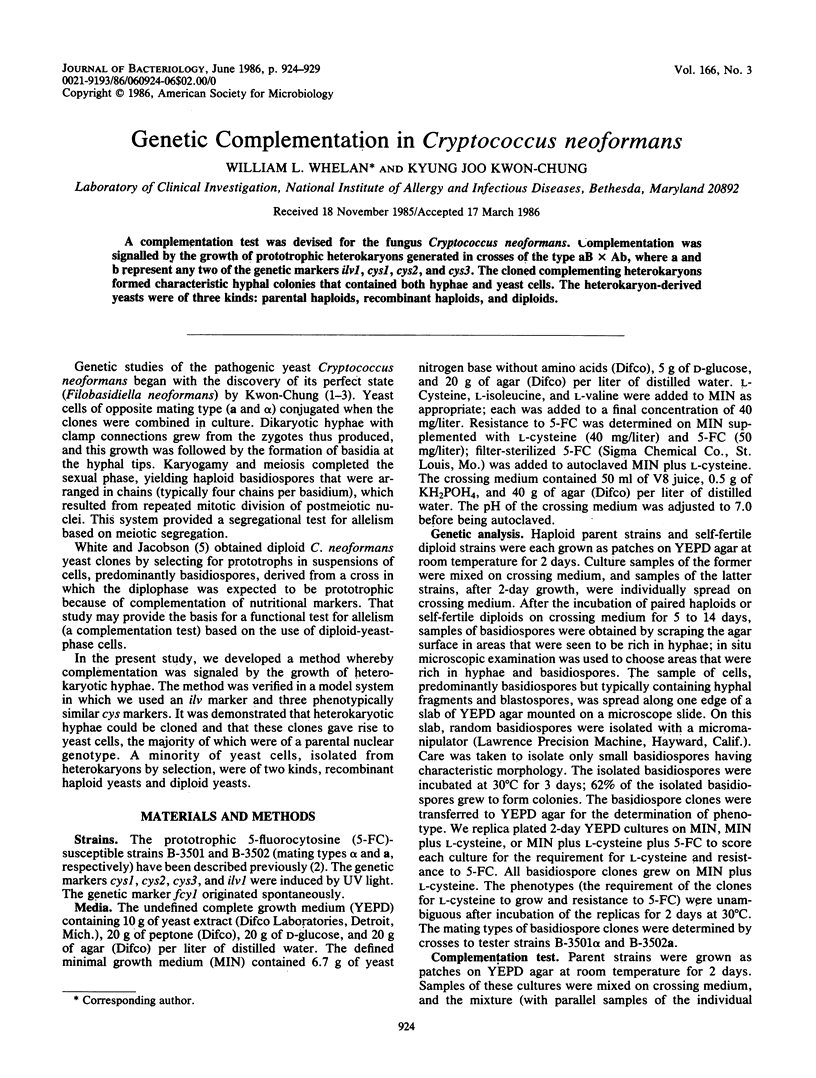
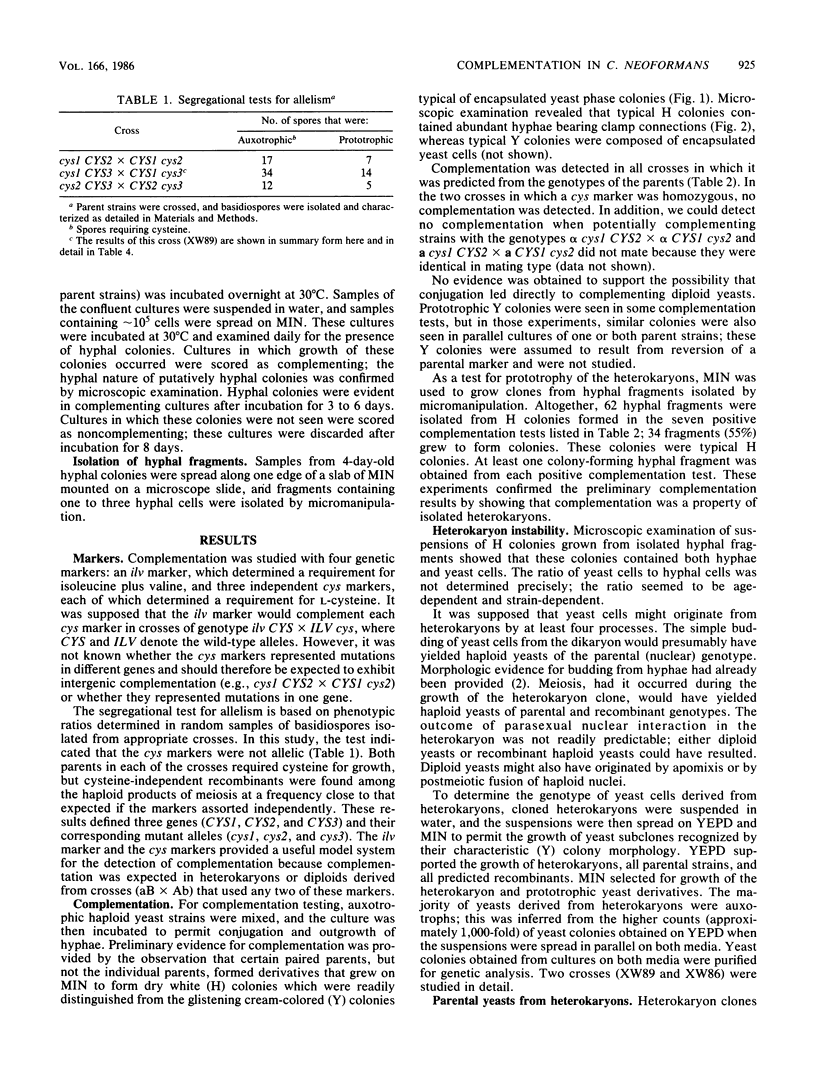
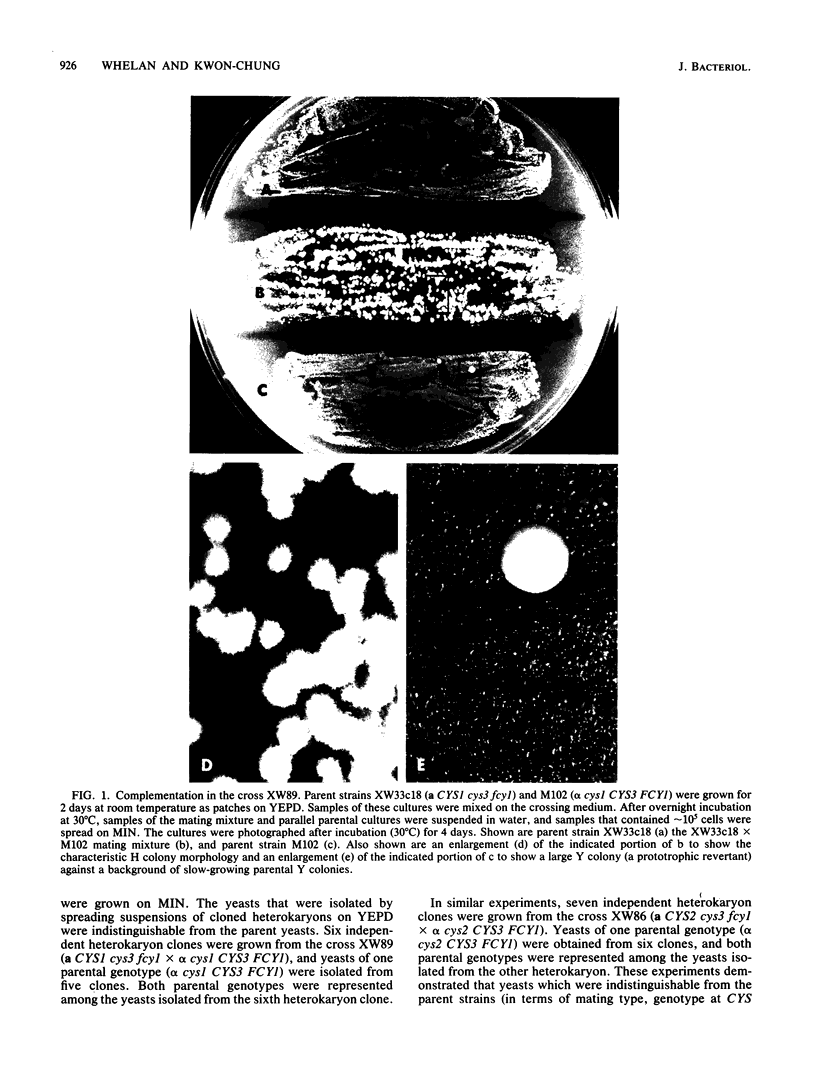
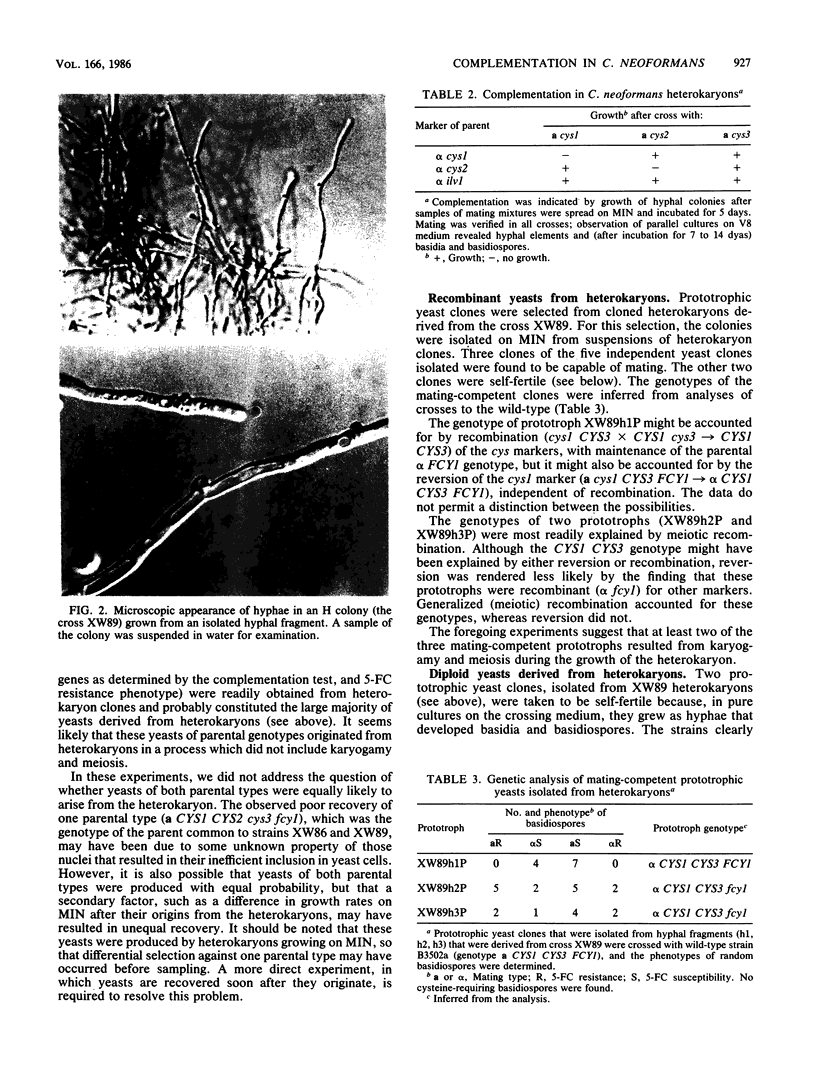
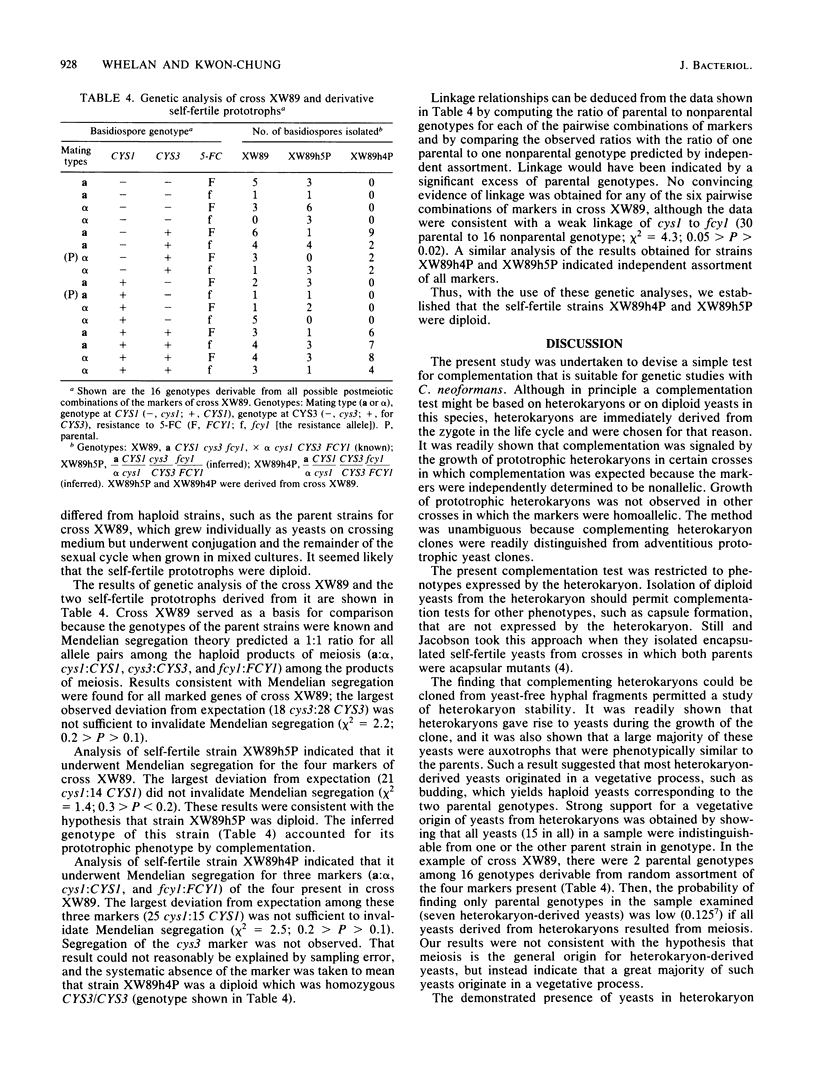
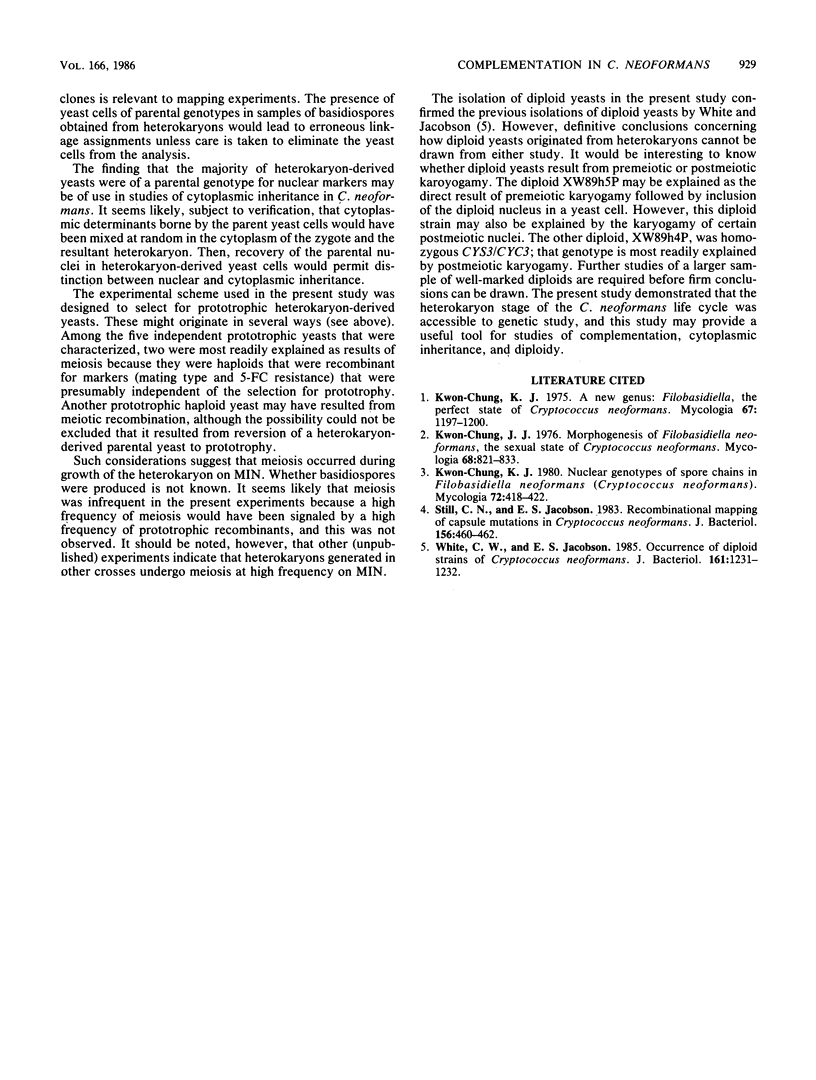
Images in this article
Selected References
These references are in PubMed. This may not be the complete list of references from this article.
- Kwon-Chung K. J. A new genus, filobasidiella, the perfect state of Cryptococcus neoformans. Mycologia. 1975 Nov-Dec;67(6):1197–1200. [PubMed] [Google Scholar]
- Kwon-Chung K. J. Morphogenesis of Filobasidiella neoformans, the sexual state of Cryptococcus neoformans. Mycologia. 1976 Jul-Aug;68(4):821–833. [PubMed] [Google Scholar]
- Kwon-Chung K. J. Nuclear genotypes of spore chains in Filobasidiella neoformans (Cryptococcus neoformans). Mycologia. 1980 Mar-Apr;72(2):418–422. [PubMed] [Google Scholar]
- Still C. N., Jacobson E. S. Recombinational mapping of capsule mutations in Cryptococcus neoformans. J Bacteriol. 1983 Oct;156(1):460–462. doi: 10.1128/jb.156.1.460-462.1983. [DOI] [PMC free article] [PubMed] [Google Scholar]
- White C. W., Jacobson E. S. Occurrence of diploid strains of Cryptococcus neoformans. J Bacteriol. 1985 Mar;161(3):1231–1232. doi: 10.1128/jb.161.3.1231-1232.1985. [DOI] [PMC free article] [PubMed] [Google Scholar]



